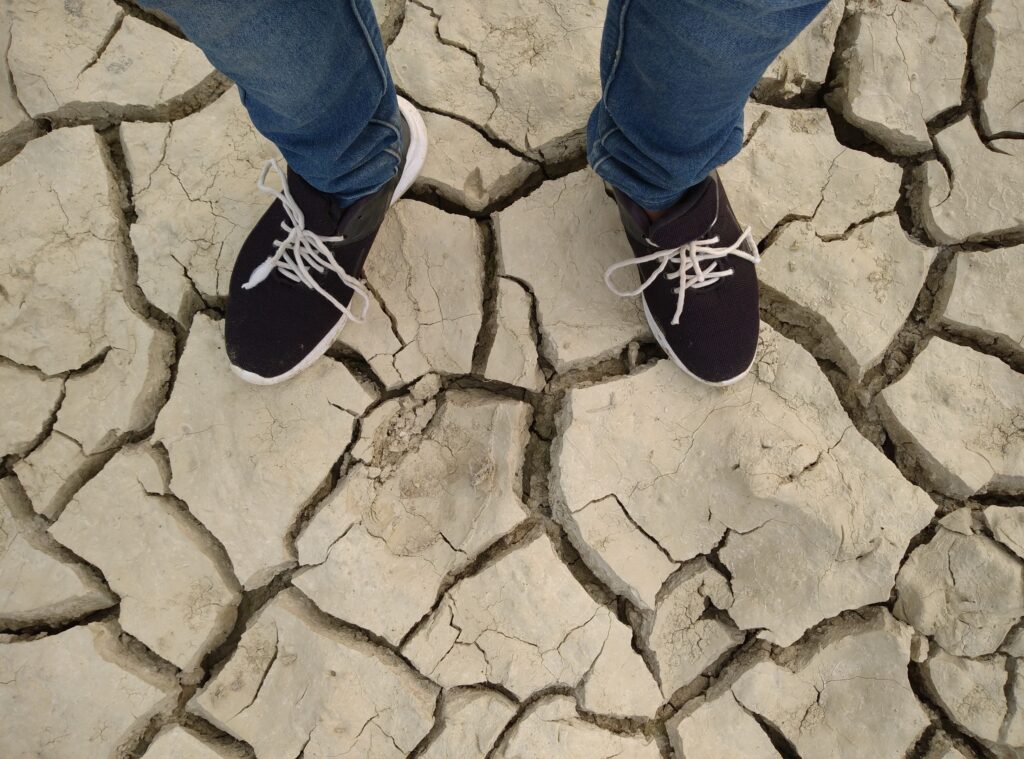
Pat Patton
Commercial Product Manager
Nevada, U.S., 10,000 b.c.e. The massive North American glacial ice sheet, the Laurentide Ice Sheet, has receded to the upper reaches of Canada. What is left in Nevada are mammoths, camels, bison, horses, giant sloths, primitive human hunters, and geothermal hot springs. Enjoyed recreationally today, our primitive human ancestors used hot springs for warmth, cleansing, and healing minerals. In fact, archaeological evidence suggests that primitive humans first utilized geothermal hot springs around 10,000 b.c.e. (1)
Today, on the Northern edge of Nevada, far from the power-generating turbines in the mighty Hoover Dam, an older, more primitive form of energy is being tapped – geothermal. In a place where primordial humans once bathed in hot springs 10,000 years ago, the energy that heated those waters is being harnessed today. The Desert Peak geothermal power project was commissioned in 2013. The plant was the first Enhanced Geothermal Systems (EGS) to generate commercial electricity in the United States. It came online producing roughly 1.7 MW, or enough electricity to power 750 homes. (1)
Enhanced Geothermal Systems (EGS) and the Future of Clean Energy
A decade later, in February 2023, the Biden-Harris Administration announced $74 million to advance EGS in the U.S. The goal: reduce geothermal costs 90% by 2035 and supply 8.5% of America’s electrical generation. The idea, simple; the goal, extremely ambitious. No large-scale EGS projects exist today, and geothermal energy only makes up 0.4% of U.S. energy production.
Understanding the EGS Process
EGS fits the bill – abundant clean energy. The process involves tapping into natural geothermal systems beneath our feet. Usable heat, ubiquitous in the subsurface but occurring at markedly different depths depending on geography, is tapped into by drilling deep wells. The wells are drilled and used for injection and extraction of water. An injection well is drilled into lower permeability, but hot, basement rock. Water is injected through the well at high pressure to fracture new pathways for fluid movement, in addition to opening existing fractures. This process develops a reservoir with enough surface area to heat water efficiently. A production well is then drilled to intersect the fractured reservoir system and extract the hot water. The hot liquid returned to the surface is used to rotate turbines, thus generating electricity. Often the fluid can be recycled and reused in a “closed loop” operation. Water is a critical component in the process, and EGS can be highly water-consuming. (3)
Water Consumption and Challenges in EGS
Access to water is an underlying challenge to accelerating deployment of EGS technology. An estimated 5 to 100 barrels per MWh are required in the process. Often water is lost to the reservoir, in some cases up to 75%, while research suggests that for EGS to be financially viable, loss rates need to be maintained below 10%. Often the water sourced for these projects comes from surface water, groundwater, brackish groundwater, or municipal sources, all resources currently under growing stress for human consumption. With electrical generation growth and an 8.5% geothermal supply target, water consumption for EGS projects could grow to over 1MM barrels of water per day by 2050. It would be correct to assume that reliance on groundwater and brackish water could prove challenging to EGS projects, particularly in the Western U.S. where water is a resource in short supply. (4)
Possible Solutions: Looking to the Oil Industry
EGS projects could look to the oil patch for help. With millions of barrels of produced water generated daily and treatment technologies advancing rapidly, conventional, and unconventional oil fields could provide a water supply to EGS projects. In fact, pairing an EGS project with oil and gas development could provide a sustainable and vertically integrated solution for coupled low-cost energy. Presently, injection of fluid for conventional geothermal energy development is regulated under the Environmental Protection Agency’s UIC Class V injection well program. Meanwhile, injection of hydrocarbon production byproduct, produced water, is managed under the UIC Class II program. Will the EPA develop a new injection program to address EGS projects that utilize produced water? This remains to be seen.
A Future Grounded in Geothermal Energy
What is apparent, is that large amounts of energy in the form of heat is, quite literally, right under our feet. In plain sight is evidence of this energy, hot springs. Undoubtedly, our prehistoric ancestors had no awareness of the potential vast supply of sustainable energy that existed in the warm waters they bathed in. The earth beneath our feet has abundant heat and energy and the oil and gas industry may have a massive supply of water to harness it. While most low-carbon power generation focuses on the wind around us and the sun above, might we exit the century once again relying on the energy under our feet?
References



